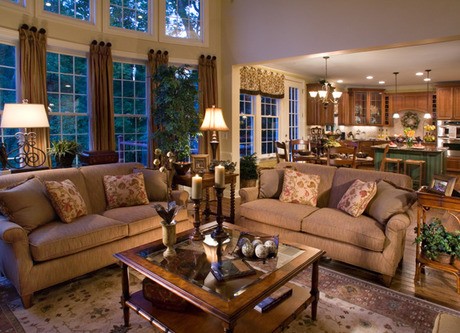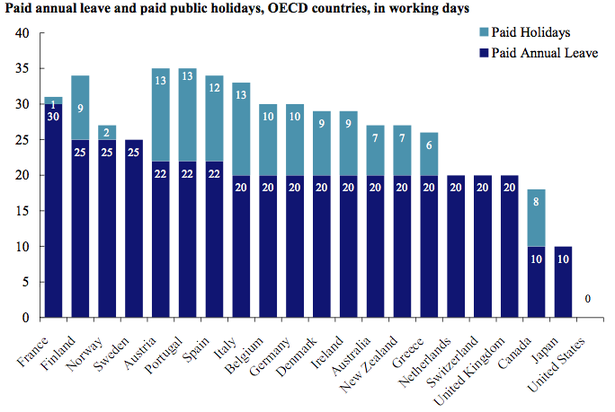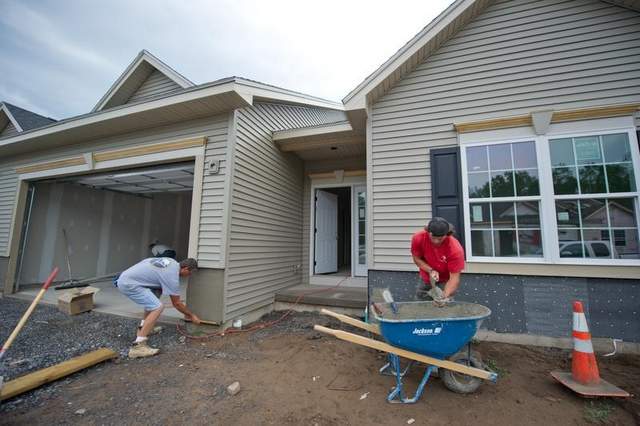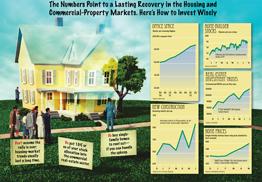10 Cutting-Edge Electronic Faucets You Don’t Have to Touch

The troubles that plagued the clunky products of the past are now history, manufacturers say.
By Nigel F. Maynard
After languishing in relative obscurity for years, the electronic faucet is poised to enter the spotlight—or so manufacturers believe.
As a result, major players in the plumbing industry are making a play for the category with sleek introductions meant to capture buyers’ attention.
Consumers, of course, are not oblivious to the electronic faucet. Almost everyone by now has used one in an airport, restaurant, or public bathroom. The products are said to have been developed in the 1950s, but it was not until the 1980s that they gained attention.
The products, however, have had little penetration at home, despite manufacturers’ claims that the units offer hygienic benefits (users don’t have to touch the faucets) and save water. But inconsistent functionality in commercial applications has made consumers hesitant to install one in a powder room or main bath. Some consumers also balked at not being able to adjust the water’s temperature.
Fast forward 30 years and manufacturers say things are different and technology has changed the game. The industry claims it has addressed all of the previous products’ issues and says if consumers try the new products, they will be pleasantly surprised and impressed.
North Olmsted, Ohio–based faucet giant Moen says its newly introduced MotionSense technology is the dawn of a new era in electronic faucets.
“MotionSense was created to respond directly to consumers’ behaviors and preferences in the kitchen,” Jack Suvak, the company’s senior director of research and insights, said earlier this year when Moen unveiled the product at the 2012 Kitchen and Bath Industry Show in Chicago. “With the wave of a hand or by placing a cup beneath the spout, you are treated to a moment of delight as you experience a faucet that intuitively understands exactly what you are trying to do and responds immediately to your needs.”
The Moen product’s sensors detect movement in two zones to set water flow in motion. A homeowner may also activate the unit with the handle.
The Swiss brand KWC also is getting in on the action. Its ONO touch light PRO faucet line features an additional electronic operating option that makes the products more versatile and flexible, the company says. Products require a hard-wired control that can be permanently mounted where it’s most convenient, but it also allows an optional second wireless control with a magnet base that can be attached to a variety of surfaces. The company says homeowners may use a finger or elbow to activate the controls.
Technology notwithstanding, perhaps design is the biggest stride the industry has made in the 30 years since the first commercial products were introduced. Early electronic faucets were cumbersome and inelegant, necessarily so to hide the various electrical mechanisms. But today’s products from manufacturers such as Grohe, American Standard, and KWC have taken on more sophisticated designs, with sinuous curves and cleaner forms.
But don’t take our word for it. Here are 10 products that show electronic faucets in a whole new light.
See the slide show at: http://www.builderonline.com/products/10-cutting-edge-electronic-faucets-you-dont-have-to-touch.aspx
Top 10 Reasons Home Buyers Prefer New Homes vs. Used

Today’s new homes offer more benefits than ever before. Here’s a quick list of the Top 10 Reasons why so many home buyers prefer new homes to used houses:
1) Design Your Dream Home Your Way: Why settle for someone else’s choices? Select your favorite cabinets, countertops, appliances, carpets and floor coverings, bath and kitchen fixtures. Your new home will reflect your taste, not someone else’s.
2) Choose a Floorplan and Room Layout that Meets Your Needs: Want a Master Bedroom on the first floor? With massive his and her’s walk-in closets? Done! With high ceilings and a luxurious, resort-style Master Bath? Would you like a sitting room with fireplace in your Owner’s Suite? French Doors opening to a private patio or the pool? Build your Master Suite, your way.
3) All New, Under Warranty: A used home has tired products that may soon need replacing. Your new home — and the products that comprise it — are brand-new and under warranty. What’s the cost to replace a roof, appliances and countertop or water heater on a used home? Those same components of your new home feature the latest designs and building materials — and they offer years of comfort and enjoyment before needing replacement.
4) Energy and Cost savings: Today’s new homes are far more energy efficient than homes built just five years ago, and no comparison to homes that are 10, 20 or even more years old. New homes offer much higher levels of performance in heating, cooling, and insulation. Why settle for drafty, energy-wasting single-pane windows in a used home? Many new homes offer double or even triple-pane windows with special coatings and inert gases between layers of glass that save energy in both heating and cooling season.
5) Comfort and Indoor Air Quality: Today’s new homes meet stringent energy standards and codes not in place in the past. They combine high-performance energy efficiency with state of the art ventilation and air filtration. The result is year-round, consistent and draft-free comfort with higher indoor air quality.
6) Low Maintenance: New cars today are computer-designed and computer-equipped and they perform far more reliably than a 10 or 20 year old car. Homes are the same. Today’s new homes not only have open floorplans and high ceilings to reflect the way we live today, they’re also made of state-of-the-art building products that require less care and maintenance.
7) Community Amenities: Many new homes are built in lavish, Master-Planned Communities with state of the art Community Centers, Pools and Clubhouses. Many new home communities feature hiking trails, protected open lands, and some of the best new schools and shopping nearby or even within your new home community.
8) Advanced Technology and Design: It’s possible to replace all of the single-pane windows in a resale home with state of the art high performance windows. It’s also possible to add insulation to a used home. However, it is very expensive to replace out of date appliances, cabinets and counter-tops in that used home. And it’s simply not realistic to dream of high ceilings on the first floor of a 10 year old two-story home. All the more reason to build it your way for the way you live today.
9) Safety: State of the art circuit breakers. Electric garage door openers with infrared beams that stop if a tricycle or child is too near. High-efficiency furnaces and air conditioners that use the latest environmentally-friendly coolants. Cabinets, carpets and paints that use fewer Volatile Organic Compounds so you and your family can breathe easier.
10) That New Home Feel: A used home was someone else’s dream, reflecting someone else’s choices, and someone else’s family memories. You may love avocado-green appliances and you may be willing to scrub stained countertops or grease-encrusted ovens and cooktops but more and more people prefer that never lived-in feel.
When was the last time you went to a department store and selected used clothes? Or visited a car dealer and paid more for a used car than a new car?
New homes offer the latest designs, style, comfort and quality and provide a care-free lifestyle so that you can enjoy your home, not work on it. Start shopping now on NewHomeSource.com, the world’s largest and most complete new home website. You’ll be glad you did.
Beyond “Likes”: 5 Smart Social Media Strategies
by Joe Bousquin
Here’s a newsflash about social media for apartment operators: it’s not just about how many “likes” you have on Facebook. Instead, it’s about connecting with your residents (and hence, their networks) to make sure your real-life communities are as sticky as possible.
“You shouldn’t really be using your Facebook page or Twitter as a classified ad or a way to sell apartments,” says Melissa Deen, marketing director for San Diego-based Sunrise Management, which runs 9,000 units across Southern California and Arizona.
It’s about more than that, says Joe Greenblatt, Sunrise Management’s CEO. “At the end of the day, it’s all about engagement, which leads to more traffic and higher retention. Engagement with residents is a good thing.”
Here are five smart ways companies are thinking about social media:
1. It’s about their network, not yours.
Since the average Facebook user has between 150 and 200 friends, having someone “like” you is an opportunity for you to start a relationship with each of their extended friends, and by doing so, expand your own network. It’s he true, exponential power of social media.
Many apartment firms have signed up with San Francisco-based RentMineOnline.com, a tool that puts the traditional resident referral bonus (you know, where you offer residents $50 or $100 off their rent if they bring a friend or acquaintance to your community) into the social sphere.
“RentMineOnline has been very useful in leveraging social media to connect with our respondents’ networks,” says Alexis Vance, national marketing director at Phoenix-based Alliance Residential Company, which operates 50,000 units in 15 states. “Engaging in referral-based contests encourages our current resident base recommend our community to their friends and family.”
2. It still has to be about the money
Even though it’s hard to measure, your social media efforts still need to pay off. That means keeping tabs on how much time you put into it, and specifically giving your associates time to engage with it, as Sunrise does.
At Farmington Hills, Mich.-based Village Green Apartments, which operates 40,000 units nationally, the company uses its social media presence on sites such as Facebook, Twitter, and even Pinterest to highlight community events, promote resident engagement, and as a communications channel. While it can’t say how much that time costs, it does have a dollar threshold that it assigns to it, wrapped into its larger marketing spend.
“We see social media as a tool we can leverage to achieve a [marketing] cost below our target level of $250 per lease,” says Sara Dixon, social media manager at Village Green. “Our goal is to engage users with great content and increase our overall reach. The effect may not translate into a prospective resident visiting the property immediately, or someone signing a lease that same day or week, but we’re looking to be a part of the larger conversation.”
3. Make Facebook About Real Time
At Alliance Residential, the firm has taken its social media per-lease tracking capability to another level, by making real-time availability about its units accessible through its properties’ Facebook pages.
“The viewer has the ability to see what is currently available at the community and inquire further,” Vance says. “All inquiries then feed directly into our lead-management system and online-application feature.”
While it hasn’t executed leases based on that functionality yet, Vance sees it as another line in her marketing spend. “We recently implemented this, and hope to see our first leases come through in the next few weeks.”
4. Use a Targeted Approach
At Alliance, social media begins with a targeted approach. That means starting a community with a single, focused online presence instead of initiating several outlets at once.
“Alliance properties use Facebook as our primary social media channel, rather than engaging with all available outlets,” Vance says. “We have found this targeted focus allows our associates and communities to become more sophisticated in their interaction and engagement initiatives, which translates to a higher success rate in our overall social media strategy. Additional channels—such as Twitter, YouTube, Pinterest and others—are then added as each property’s strategy develops.”
5. Engage Employees
Of course, Facebook isn’t just for residents—or a way employees can goof off at work. It can also be an effective tool for recognition within your company. And given the geographically dispersed nature of the apartment business, it can help employees network with each other.
Philadelphia-based Madison Apartment Group uses its Facebook page not only to communicate with residents, but as a team-building tool inside its organization as well.
“We see Facebook as a way to engage our employees or perspective employees,” says Stephanie Haefner, Madison’s director of interactive marketing. “We have begun posting promotions and new hires to not only notify our residents of their new management team members, but also as a way to welcome new hires and put a spotlight on team members who excel. Our new tagline, ‘Find Your Place,’ is one that speaks to residents, but also to our team members inside the company.”
No-Vacation Nation: Why Don’t Americans Know How to Take a Break?
By Derek Thompson
The United States has no vacation policy — and neither do families, judging from surveys of workers’ time off. Are we doing it wrong? Tell us how you use breaks and vacations to manage your productivity, and we’ll publish your best responses later this week.

If something must exist for it to be broken, then U.S. national vacation policy cannot be broken, because there isn’t one. Here’s a graph of federal paid annual leave policies across advanced economies in the OECD. Look to the far right. See us? We’re the one at zero.

So, America is exceptional. But not wiser, perhaps. The science of productivity is pretty clear that anything from a coffee break to a two-week vacation can make us better workers by replenishing our energy and attention and allowing our brains to make new connections that are obscured in the daily grind. Even at companies that offer vacation time (the vast majority of them), Americans often don’t take advantage. We like working, or at least we’re so afraid of not working that we deny ourselves breaks that might, paradoxically, make us more productive in the long term. Are we crazy?
Since it’s August, and you’re either on vacation yourself or barely working at your desk, I wanted to turn the question over to you. Instead of focusing on the national level, l want to hear from your personal experience. What kind of vacation and time-off policy does your company offer, and — most importantly — do you agree with it? Or do you think there would be a smarter way for companies and employees to work together to create a schedule and vacation policy that maximized both our happiness and even our effectiveness?
***
When are you at your most productive? If you’re like me, you ask yourself that question all the time. And 95 years ago, Dr. A. F. S. Kent tried to answer it by studying factory workers by day of the week. He determined that people worked least effectively on Mondays and best on Saturdays (this was before two-day weekends were national). This conclusion has been duplicated again, and again — well, at least half of it. The Monday blues are a real thing, studies have repeatedly shown. But most workers really start firing on all cylinders some time toward the middle/end of the week before they occasionally flag on Friday.
From this research, productivity gurus have gleaned at least three variables that are crucial to determining your output. The first is practice efficiency. Like computers, we need time to boot up, and it’s only after a bit of practice that we “hit our groove.” That’s one reason Monday’s feel slow. We’re still trying to find our flow. The second is energy. Simply: Our bodies get tired, and it’s as true for our brains as our other muscles. You don’t manufacture attention so much as consume it from a finite supply. When the supply runs out — around 9pm on a Wednesday (or, uh, 3pm on a Friday?) — productivity falls. The third is end spurt. We don’t just work better near deadlines. We also work harder near finish lines. Ever feel inspired by Thursday’s proximity to the weekend that you work a little bit harder? That’s the end spurt talkin’.
So the issue for me, as I think about answering the question I posed above, is what kind of schedule maximizes practice efficiency, energy, and end spurts? It would seem to be one where breaks were short enough that workflow and neural connectivity didn’t atrophy too much; where I rarely worked myself to exhaustion; and where breaks were rewarding and alluring, so as to create a sense of an end line. My sense is that this would strengthen the case for flex-time to allow people to work more half-days, even on the weekends, which would give them time off to spend with their family and rest their brains without arresting their workflow. Anyway, that’s my thought. I’m much more interested to hear yours.
Home builders are catering to boomers

Early in his career as a custom home builder, Joe Sortino says he spotted a trend: The aging baby boomer population would need homes to accommodate their changing lifestyles.
Written by
Mary Chao
Sortino, who does business under the name Sortino Properties, began to concentrate on the market for downsizing empty nesters, with new home communities in Greece and Pittsford; his latest is in Webster, near Lake Ontario.
The demand for single-story living continues to grow as this population looks for homes that suit how they want to live now. Local builders like Sortino are fine-tuning properties for this market.
As baby boomers regain their losses from the stock market collapse of a few years ago, builders are seeing more demand for new single-story homes, said Rick Herman, CEO of Rochester Homebuilders’ Association.
Empty nesters who are looking to downsize have options when it comes to new-build homes, Herman said, noting that there are single-family detached homes, townhomes, condominiums, doubles and multi-units.
Sortino’s Webster development, named Cambridge Court, features ranch-style townhomes that start at $179,900 for about 1,500 square feet of living space. It is built for an active senior, with features that will allow for future comfort, such as extra-wide doors to accommodate walkers and wheelchairs. Another thoughtful feature is the flared door handles, which make it easier for people with arthritis to grasp them, Sortino says.
The floor plan features open spaces where the living room, dining area and kitchen all flow into one. Details such as crown moldings highlight the living space.
By talking with and listening to his customers, Sortino says he is able to improve on his projects. He is planning a new development in the village of Churchville, where new townhome prices will start at $159,900.
George and Audrey Graban will soon be moving into Sortino’s Webster development, downsizing from a larger home on Sodus Bay. “We decided to go small,” says Audrey Graban.
One of the appealing attractions of the townhome is the full unfinished basement with extra space, as they have two children and five grandchildren, George Graban said.
Many empty nesters no longer want the hassle of yard work, preferring a homeowner’s association to take care of lawn mowing and snow shoveling, Sortino said, noting that some may be snowbirds who may want a place half a year in the Rochester area.
The demand for new housing rebounded significantly this year, said Sortino, who is also president of the homebuilders association.
As the consumer confidence continues to get better and baby boomers continue to grow older, the demand for new-build homes that suit their lifestyles will remain strong, Herman said.
Is the Real-Estate Rebound for Real?
For investors, “home” is no longer a four-letter word.
The real-estate sector, for the first time in years, is serving as a beacon of relative strength in an otherwise weak economy. Standard & Poor’s on Tuesday reported that home prices in its S&P/Case-Shiller 20-city index rose 0.9% in May from the prior month, after adjusting for seasonal trends, and have risen 2.6% since bottoming in January.
Read More Here:
http://online.wsj.com/article/SB10000872396390443545504577565322674652392.html?mod=WSJ_RealEstate_LEADTopNews

